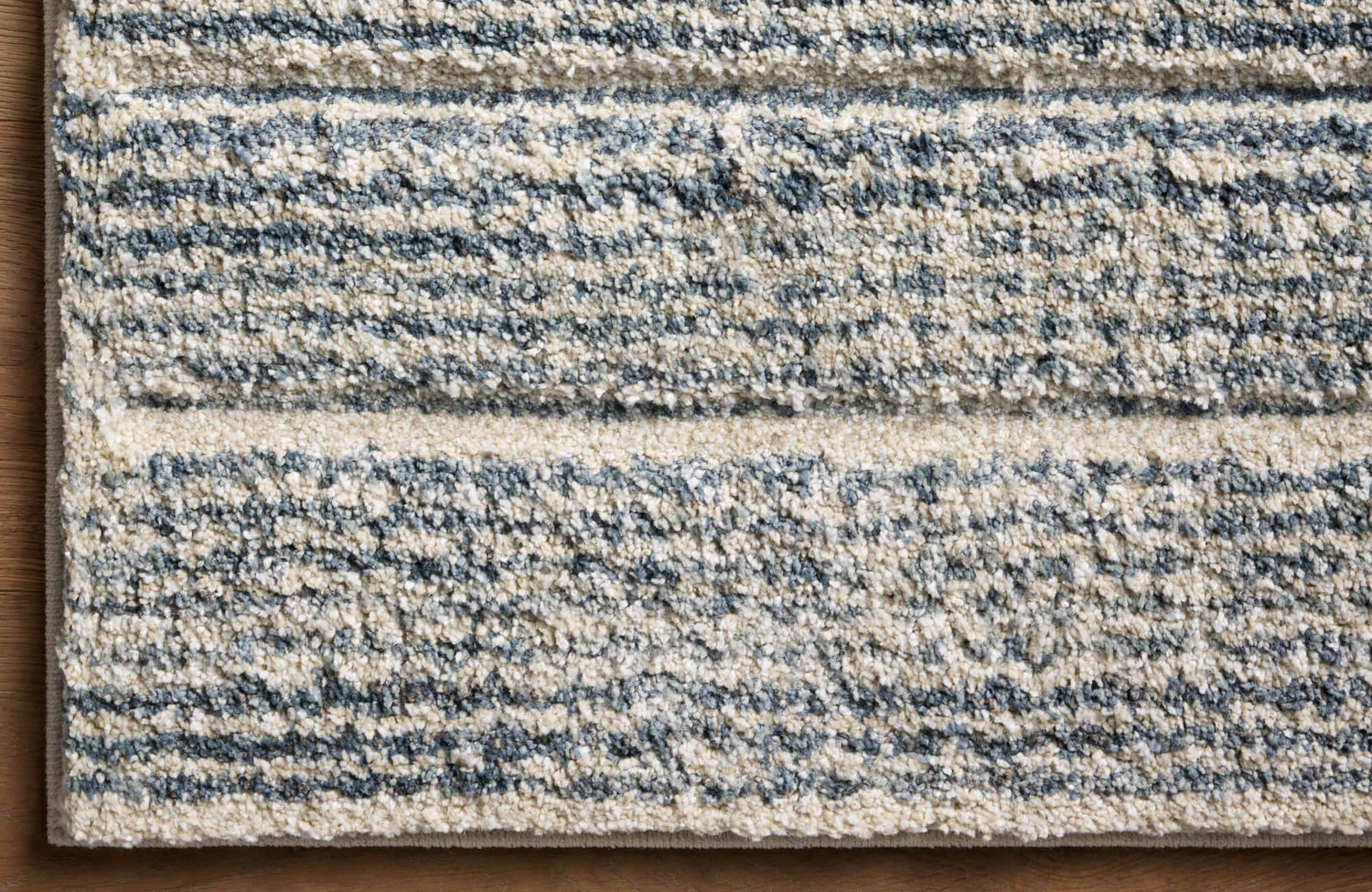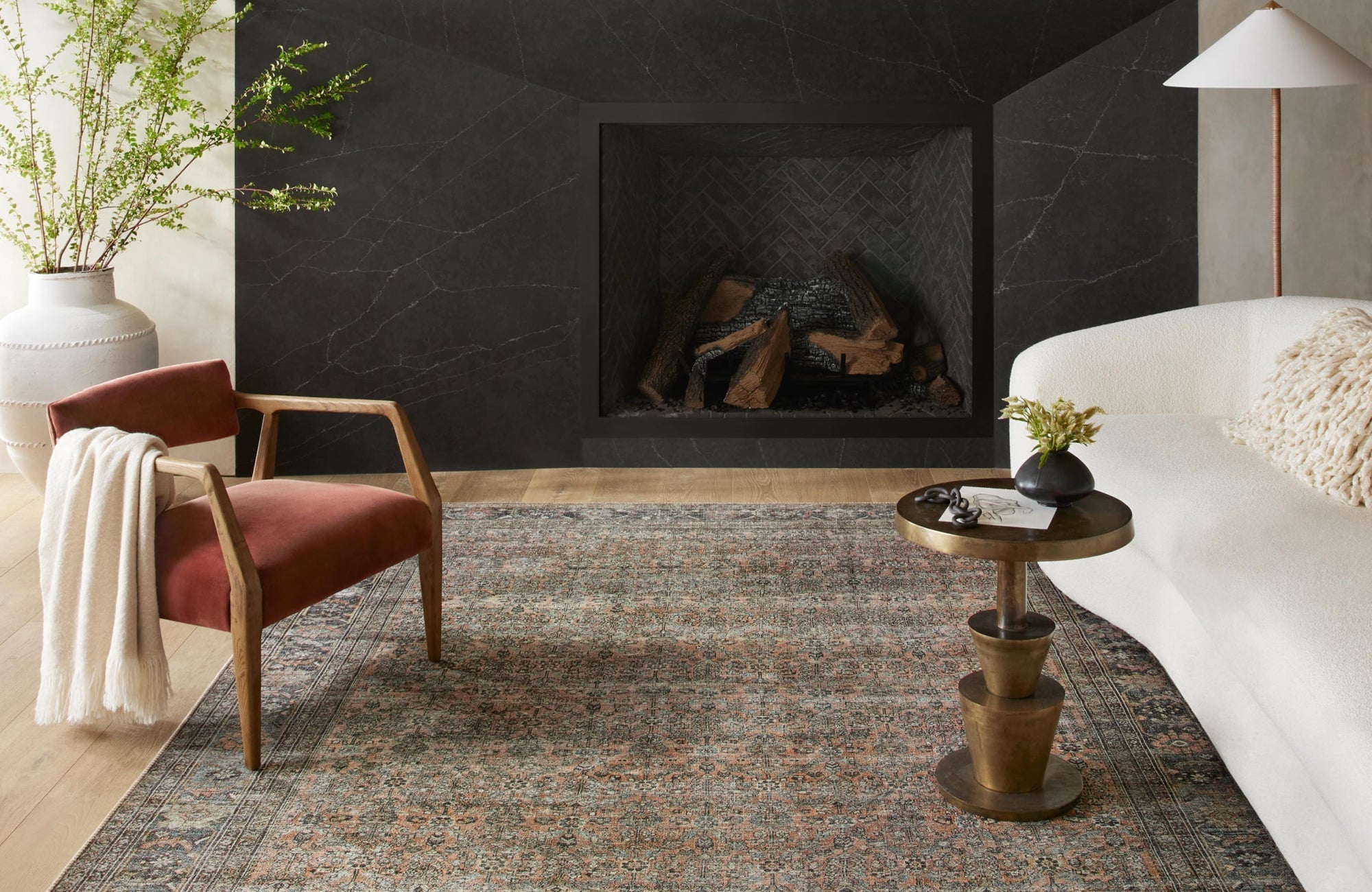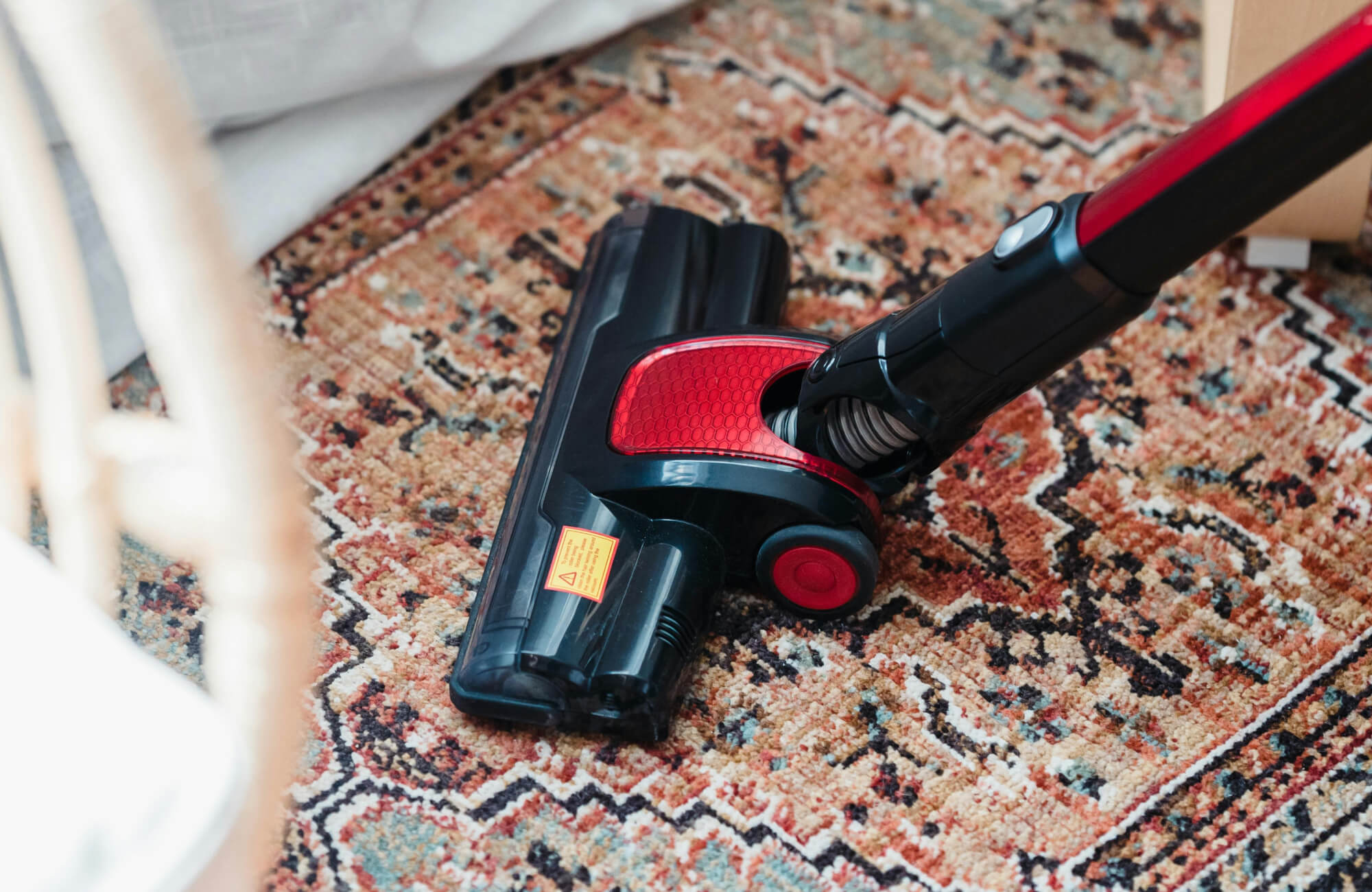Polypropylene rugs are a popular synthetic flooring choice due to their affordability, durability, and moisture resistance. While they offer practical benefits, concerns about chemical emissions, allergens, and fire safety arise. Understanding their composition, manufacturing process, and potential health effects helps consumers make informed decisions about balancing functionality and safety. For those prioritizing indoor air quality, choosing rugs with low-VOC certification, such as those offered by Edward Martin, can help minimize exposure to harmful emissions while maintaining durability and style.

Polypropylene Rug Composition and Manufacturing
Polypropylene rugs are made from thermoplastic polymer fibers valued for their strength and water resistance. The manufacturing process involves fiber extrusion, weaving or tufting, and applying backings and protective treatments, all of which contribute to the rug’s durability and performance while influencing chemical emissions.
Polypropylene Fiber Properties
Polypropylene, chemically represented as (C₃H₆)n, is a synthetic polymer formed through chain-growth polymerization. Its molecular structure resists moisture, preventing mold and mildew while enhancing stain resistance. Unlike natural fibers that absorb liquids, polypropylene repels spills, making it ideal for areas prone to messes.
The texture and performance of polypropylene rugs vary based on the type of fiber used. For instance, Bulk Continuous Filament (BCF) consists of long, unbroken strands, making it a cost-effective option but with a coarser feel. In contrast, heat-set olefin undergoes a thermal process that enhances softness and stability, creating a texture closer to natural fibers. Thanks to advancements in fiber processing, modern polypropylene rugs are significantly softer and more comfortable than earlier versions, offering a better balance between durability and comfort.
Manufacturing Process and Chemical Treatments
The production of polypropylene rugs begins with fiber extrusion, where molten polypropylene is spun into fine strands and processed into yarns. These yarns are then either woven for a structured, dense finish or tufted, a process where fibers are punched through a backing and secured with adhesives, often latex-based. Each method contributes to the rug’s durability, texture, and overall performance.
To further enhance longevity and stain resistance, polypropylene rugs undergo additional treatments, including dyeing, fire retardants, and protective coatings. While these treatments improve functionality, they can also release volatile organic compounds (VOCs), which may affect indoor air quality. For example, latex backings in tufted rugs can emit styrene-butadiene compounds, a common source of VOCs.

Chemical Emissions and VOC Exposure
Volatile organic compounds (VOCs) from polypropylene rugs can affect indoor air quality, especially during initial off-gassing. While emissions naturally decrease over time, choosing certified low-VOC rugs and ensuring proper ventilation can significantly reduce exposure for a healthier indoor environment.
Common VOCs in Polypropylene Rugs
While polypropylene itself is a stable material, the adhesives, dyes, and backings used in rug production can release volatile organic compounds (VOCs). These emissions are most noticeable when a rug is new, with some compounds potentially affecting indoor air quality.
One common VOC found in adhesives is formaldehyde, a known irritant that can cause eye, nose, and throat discomfort. Similarly, solvents like toluene and xylene, often used in the dyeing process, have been linked to headaches and respiratory irritation. Another notable compound is 4-phenylcyclohexene (4-PC), a byproduct of styrene-butadiene latex, which is responsible for the distinct “new carpet smell.” While these emissions tend to dissipate over time, poorly ventilated spaces can prolong exposure, causing discomfort for sensitive individuals.
Low-VOC Certification Standards
To minimize exposure to harmful emissions, certification programs help consumers identify rugs that meet strict air quality standards. These programs establish strict guidelines to ensure that rugs meet safety and environmental standards, reducing exposure to volatile organic compounds (VOCs) and other potentially harmful substances.
One widely recognized certification is Green Label Plus, which sets rigorous VOC limits specifically for carpets and rugs, ensuring they contribute to healthier indoor air. Another key standard, OEKO-TEX® STANDARD 100, evaluates textiles for a range of concerns beyond VOCs, including allergens, heavy metals, and other harmful chemicals. For environments requiring even stricter safety measures, GREENGUARD Gold certification focuses on ultra-low emissions, making certified products ideal for homes, schools, and healthcare facilities.
For those seeking safe, eco-conscious options, Edward Martin offers polypropylene rugs that meet these rigorous standards. Our selection includes OEKO-TEX® STANDARD 100 certified rugs, tested from raw materials to the finished product to ensure they are free from harmful substances. Additionally, we adhere to the Global Recycled Standard (GRS), which verifies responsible sourcing and tracks recycled materials, providing both environmental responsibility and peace of mind for homeowners.

Allergenic Properties and Skin Sensitivity
Polypropylene is generally considered hypoallergenic, but processing methods and chemical additives can influence allergenic potential. While its non-porous nature helps reduce allergen buildup, certain treatments or residues may still cause sensitivities in some individuals, particularly those with preexisting allergies or skin conditions.
Hypoallergenic Nature of Polypropylene
Polypropylene’s non-absorbent structure naturally resists dust mites, mold, and pet dander, making it a practical choice for allergy-prone households. Unlike natural fibers such as wool or cotton, which retain moisture and can encourage allergen buildup, polypropylene remains dry. This moisture resistance helps prevent allergens from settling while also making maintenance easier.
However, while the fibers themselves are hypoallergenic, additional factors, such as chemical treatments or manufacturing residues, can influence overall safety. For individuals with heightened sensitivities, opting for low-VOC certified polypropylene rugs can help minimize potential allergens while ensuring a cleaner indoor environment.
Potential Skin Irritants
Although polypropylene fibers are generally non-irritating, certain factors may cause discomfort or sensitivity. Some rugs, particularly those made with coarse-textured Bulk Continuous Filament fibers, can create friction against the skin. Additionally, residual chemicals from dyes or protective finishes may leave trace substances that could trigger mild reactions, especially for those with sensitive skin or preexisting conditions.
To enhance comfort and reduce potential irritation, heat-set polypropylene rugs, which undergo a thermal process for added softness, are a better choice. Additionally, washing or vacuuming new rugs before use can help remove any remaining residues, ensuring a more skin-friendly surface. For those with heightened sensitivities, selecting low-emission, certified rugs provides an extra layer of reassurance.
Fire Safety and Flammability
As a thermoplastic, polypropylene reacts differently to heat than natural fibers, influencing its fire safety profile. While it doesn’t ignite easily, its tendency to melt under high heat requires careful consideration, especially in areas near open flames or heat sources.
Flammability Risks
Polypropylene is naturally resistant to ignition, but it reacts differently to heat than natural fibers. Instead of catching fire easily, it melts under high temperatures, a phenomenon known as thermoplastic melt-drip. While this characteristic helps slow flame spread, it can create hazards if the molten material adheres to surfaces or skin.
During combustion, polypropylene also releases carbon monoxide and hydrocarbons, which can pose inhalation risks, especially in enclosed spaces. To assess fire safety, polypropylene rugs are tested under standardized methods such as ASTM D2859 (pill test), which evaluates flammability performance.
Fire Retardant Applications
To enhance fire resistance, some manufacturers apply flame-retardant treatments to polypropylene rugs. In the past, brominated retardants (PBDEs) were commonly used, but due to growing health concerns, they have largely been phased out. Today, manufacturers have shifted to phosphate-based retardants, which offer improved fire safety with lower toxicity risks.
For a safer choice, opting for rugs made with inherently flame-resistant fibers or those treated with modern, less toxic retardant technologies helps minimize chemical exposure while maintaining fire safety. Checking for compliance with fire safety standards can also provide added reassurance when selecting a rug for high-risk areas.

Safe Use and Maintenance
Proper care, ventilation, and cleaning reduce chemical exposure and extend the lifespan of polypropylene rugs. Implementing these practices not only preserves the rug’s appearance but also helps maintain a healthier indoor environment. To ensure optimal performance and longevity, it is always best to follow the manufacturer's care guidelines, as they provide specific recommendations for cleaning, maintenance, and safe usage.
Managing Off-Gassing
New polypropylene rugs tend to release the highest concentration of VOCs within the first few days after unpacking. To minimize exposure, airing the rug out in a well-ventilated space before use helps disperse emissions more quickly. Opening windows, using HEPA-filtered air purifiers, and maintaining good airflow can further reduce lingering chemicals.
For an even faster off-gassing process, placing the rug in a shaded outdoor area for a short period allows emissions to dissipate naturally. However, direct sun exposure should be avoided, as it may cause discoloration. Choosing low-VOC certified rugs provides an added layer of safety, ensuring minimal chemical emissions while maintaining durability and style.
Cleaning and Care Guidelines
Polypropylene rugs are designed for effortless upkeep, making them a hassle-free flooring solution for busy households. Regular vacuuming with a HEPA-filtered vacuum helps remove dust and allergens, while spot cleaning with mild, pH-neutral detergents effectively eliminates spills without damaging the fibers. Their stain-resistant nature also reduces the risk of permanent discoloration, ensuring a fresh, well-maintained look with minimal effort.
Unlike natural fiber rugs, which often require specialized treatments, polypropylene rugs can be cleaned using household-friendly products. Their quick-drying properties further prevent moisture buildup, reducing the likelihood of mold or mildew growth.
In addition to routine cleaning, proper ventilation plays a crucial role in minimizing chemical exposure, especially for new rugs that may release volatile organic compounds (VOCs). Airing them out in a well-ventilated space, opening windows, and using an air purifier can help reduce emissions. For long-term durability and safety, it’s always best to follow the manufacturer’s care guidelines, as they provide specific instructions to ensure optimal performance and longevity.
Preventing Wear and Extending Rug Lifespan
Proper care not only preserves the appearance of polypropylene rugs but also extends their overall lifespan. One simple yet effective method is rotating the rug periodically to prevent uneven wear, especially in areas with frequent use. Additionally, avoiding prolonged pressure from heavy furniture helps minimize fiber compression and indentation.
Exposure to excessive moisture or humidity should also be limited, as it can weaken the rug’s backing and compromise its structural integrity over time. By following these maintenance practices, homeowners can ensure their polypropylene rugs remain durable, visually appealing, and long-lasting.
Advantages of Polypropylene Rugs
While concerns about chemical emissions and flammability exist, polypropylene rugs offer numerous benefits that make them a practical flooring choice. Their durability, affordability, and ease of maintenance make them especially appealing for busy households and high-use areas.
Durability and Longevity
Engineered for daily wear and tear, polypropylene rugs are a durable choice for both busy households and commercial spaces. Unlike natural fibers that can fray or deteriorate over time, polypropylene maintains its structural integrity, even in high-use areas. Additionally, its synthetic composition offers exceptional fade resistance, ensuring colors remain vibrant even with prolonged exposure to sunlight.
Beyond color retention, polypropylene’s strong fibers help prevent crushing and matting, preserving the rug’s texture and appearance despite regular use. Its moisture-resistant properties further enhance longevity by protecting against mold, mildew, and fiber breakdown, making it a reliable, long-lasting option for high-activity environments.
Stain and Moisture Resistance
One of the key advantages of polypropylene rugs is their exceptional resistance to stains and moisture. Unlike natural fibers such as wool or cotton, which readily absorb liquids, polypropylene fibers are non-absorbent, preventing spills from soaking in. This makes cleanup quick and hassle-free, making these rugs especially useful in kitchens, dining areas, and homes with pets or children. Additionally, their moisture-resistant properties help prevent the growth of mold and mildew, making them a practical choice for basements, bathrooms, and even outdoor patios.
A perfect example is Edward Martin’s Broderick Polypropylene Pile Rug in Natural/Bone, which features a tightly woven structure that enhances its ability to repel spills and stains. Its light, neutral tones retain their fresh appearance over time, as the rug’s non-absorbent fibers prevent liquids from causing discoloration. Whether placed in a high-use living space or an area prone to moisture, this rug seamlessly combines style and practicality, eliminating concerns about stains or water damage.
Budget-Friendly and Cost-Effective
Compared to wool or silk rugs, polypropylene provides a cost-effective alternative without compromising on style or functionality. Due to advancements in fiber technology, modern polypropylene rugs are not only more visually appealing but also softer to the touch, offering improved comfort while maintaining affordability.
This balance of durability and budget-friendly pricing makes polypropylene rugs a practical investment for homeowners seeking long-term value. Their ability to withstand daily use while remaining accessible and stylish ensures they are a smart choice for a variety of spaces.
Easy Maintenance and Cleaning
As previously highlighted, polypropylene rugs are valued for their effortless upkeep, making them an ideal choice for those who prioritize convenience and practicality. Unlike materials that require specialized treatments or delicate handling, these rugs can be easily maintained without extra effort. Their synthetic composition also prevents common maintenance challenges, allowing homeowners to enjoy a hassle-free flooring option that stays presentable with minimal care.
What sets polypropylene rugs apart is their ability to remain low-maintenance regardless of placement. They do not require frequent deep cleaning, specialized products, or extensive upkeep to retain their appearance. Whether used in a busy household or a quiet setting, they continue to look well-kept with only basic care. This makes them an excellent option for those seeking a stylish, functional rug without the burden of intensive maintenance routines.
Versatility in Design and Application
Available in a wide range of colors, patterns, and textures, polypropylene rugs effortlessly complement various interior styles. Their lightweight structure makes them easy to move, reposition, or layer, allowing for a customized look in any space. Beyond aesthetics, their versatile design extends to both indoor and outdoor applications, offering flexibility across different environments.
Edward Martin’s Broderick Polypropylene Pile Rug in Coffee/Bronze illustrates this versatility with its rich, earthy tones and intricate pattern that seamlessly fits into both modern and traditional spaces. Designed for both style and function, its neutral yet sophisticated color palette allows it to blend effortlessly with a variety of décor themes, from rustic to contemporary.
For a natural alternative, Edward Martin’s wool rugs offer both durability and an elevated sense of comfort. Wool’s inherent softness and breathability enhance indoor living spaces, making it a premium choice for homeowners who prioritize both aesthetics and functionality. A perfect example is the Mallory Wool Pile Rug in Khaki, which features a refined neutral tone and a plush texture that blends seamlessly into various interior styles. Its insulating properties improve indoor comfort, while its stain-resistant fibers ensure lasting beauty with minimal maintenance. Additionally, wool’s biodegradable and renewable nature makes it a responsible option for those looking to invest in sustainable home décor without compromising on style or practicality.
Final Thoughts on Polypropylene Rug Safety
Polypropylene rugs provide durability, affordability, and moisture resistance, but safety considerations depend on chemical treatments, VOC emissions, and fire resistance. While the fibers themselves are hypoallergenic, dyes and backings can introduce irritants. Proper ventilation and choosing certified low-VOC rugs are therefore encouraged to enhance indoor air quality. For those prioritizing both safety and sustainability, Edward Martin’s polypropylene rugs meet rigorous standards, including OEKO-TEX® STANDARD 100 and Global Recycled Standard (GRS) certifications, ensuring they are free from harmful substances and responsibly sourced.
For expert guidance in selecting the right rug, Edward Martin’s design services offer personalized recommendations to suit both style and functionality. Contact us for assistance in finding the perfect rug for your space!









